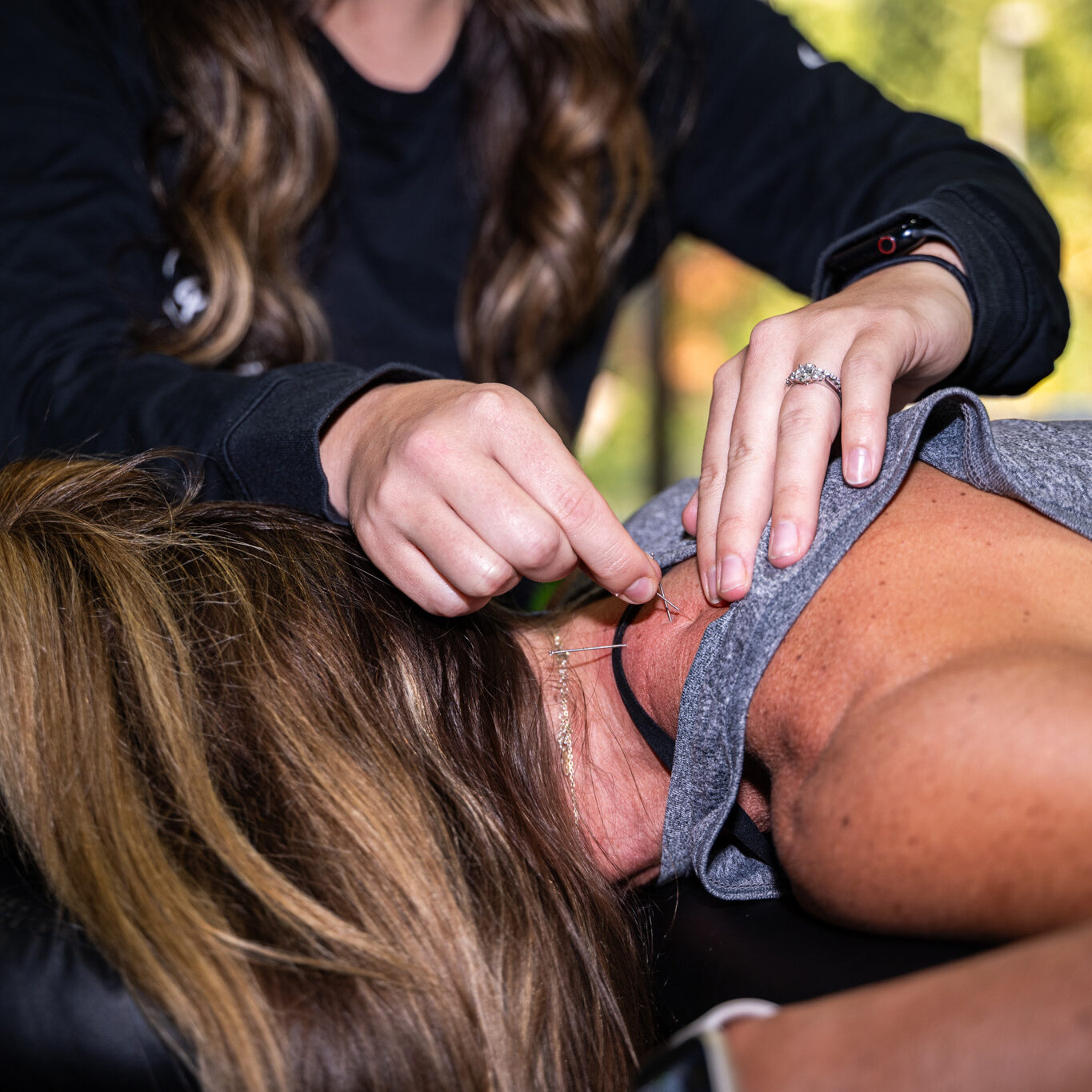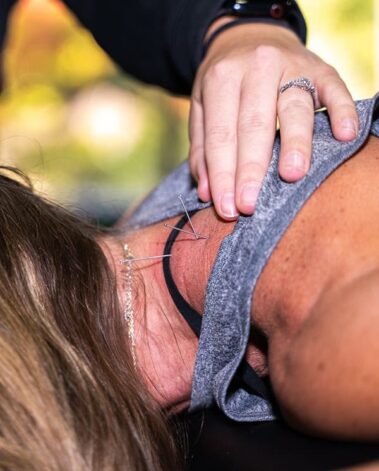Dry Needling, also known as Trigger Point Needling, is a cost-effective technique for the treatment of myofascial pain and dysfunction. Dry Needling stimulates the local healing processes of the affected tissues, reduces inflammation and decreases pain to restore proper function.
In the treatment of trigger points for patients with myofascial pain syndrome, dry needling is an invasive procedure in which a thin needle is inserted into the skin and muscle directly at a myofascial trigger point. A myofascial trigger point consists of multiple contraction knots, which are related to the production and maintenance of the pain cycle.
When an injury occurs from repetitive use or acute trauma, inflammation will be produced from the damaged tissues. The damaged tissues will also go into a protective tension state or contracture to guard against further damage from utilizing the injured tissue. This contracture and inflammation inhibit microcirculation which limits both the oxygen rich blood reaching the injury and the waste products leaving the injury. The injury site becomes hypoxic (decreased in oxygen) which stimulates the body to produce fibroblasts, a cell that produces fibrosis or scar tissue. This fibrosis and scarring builds up around the muscles and tissues limiting the tissues ability to fully function and can also cause compression and irritation of nerves – all of which inevitably lead to biomechanical disturbances.
Proper dry needling of a myofascial trigger point will elicit a local twitch response (LTR), which is an involuntary spinal cord reflex in which the muscle fibers in the taut band of muscle contract. The LTR indicates the proper placement of the needle in a trigger point. Dry needling that elicits LTRs improves treatment outcomes, and may work by activating endogenous opioids (the bodies natural pain-reliever). Inserting the needle can itself may cause pain, although when done by well-trained practitioners that is not a common occurrence.





